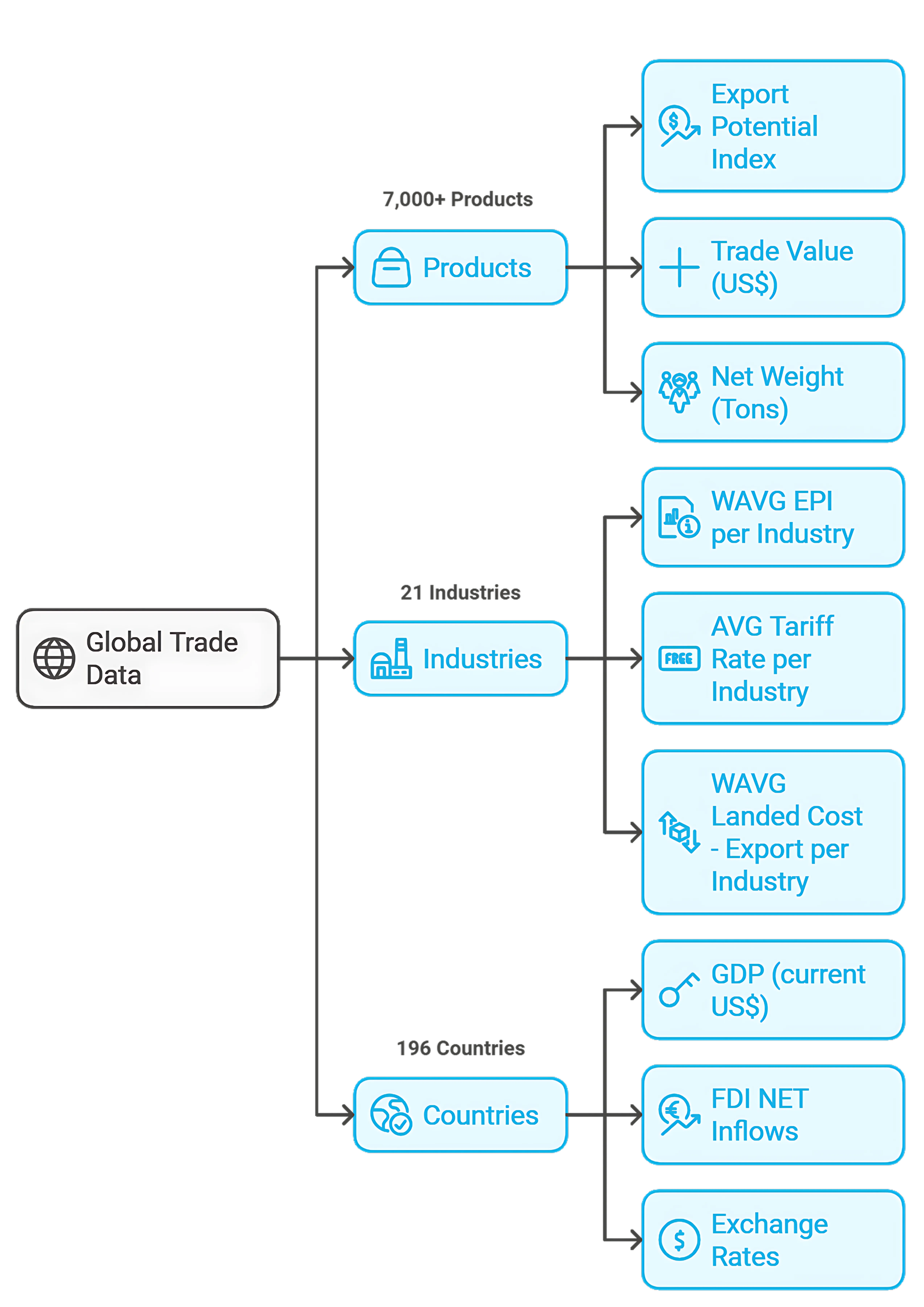Enabling Data-Driven
Sustainable Global Trade
Ecosystem
Transforming Global Trade with AI Agents and Actionable Insights.
Trade Enablers:
Powering a Connected
Ecosystem
Businesses and SMEs
Businesses and SMEs constantly look to expand internationally, manage supply chain risks & search for an alternative market. Our platform provides vital data on market trends, trade flows, and access to over 30 million traders. By enabling seamless information flow between governments trade facilitators and businesses, we help businesses navigate regulations, form strategic partnerships, and achieve sustainable global growth.
Trade Facilitators
Trade facilitators ensure the smooth flow of goods and services in global trade. Our platform provides key insights , enabling logistics providers and financial institutions to offer tailored solutions, enhance trade efficiency, and drive sustainable growth while reaching out 30 Million traders for potential business.
Governments
Government play a key role in shaping global trade, promoting FDI, and supporting local businesses. Our platform provides access to over 65 key performance indicators (KPIs) and data of verified 30 million traders, enabling governments to attract foreign investors, identify high-potential sectors, and craft effective trade policies. With these insights, governments can drive economic growth and promote their local industries on a global scale.
Our Growing Data
Trade Foresight’s powerful dataset is
constantly growing and expanding
making it preferred platform for all
Trading needs.
30M+
Business
21+
Industries
6.5K+
Products

Our Data Partners
Trade Foresight leverages over 22 authentic and diverse trade data sources covering 190+ countries & 7,000+ level 6 HS code products.
Testimonial
Here’s what our platform
users have to say about
their experience!
Mehr Shah
Mehr Shah – Director (Karandaaz)
We had our custom-developed portal that required further data enrichment. With TFS’s Data Connectors, we enhanced Karandaaz Portal with more trade-related data KPIs to give traders and MSMEs a holistic perspective on the trade landscape from Pakistan.

Mohammad Ahmer
Program manager
With TFS’s white label deployment at SEDA (Saudi Export Development Authority), we were able to promote non-oil-based exports and gather enough market intelligence to seek potential avenues to increase the Saudi export base. Its fast deployment allowed us a quick ROI, and in a few months, we were able to see the desired results.
Contact us
For sales or general enquiries, reach out to us directly through:
[email protected]
Not sure which plan to pick?
Let us do the hard work so that you can focus on the stuff that matters most. It will only take a couple minutes.




